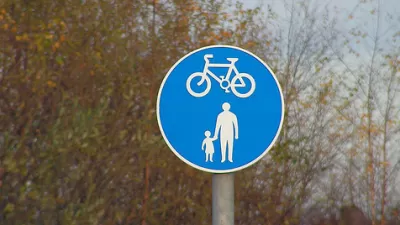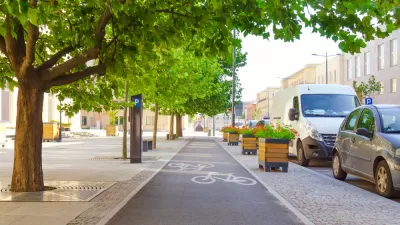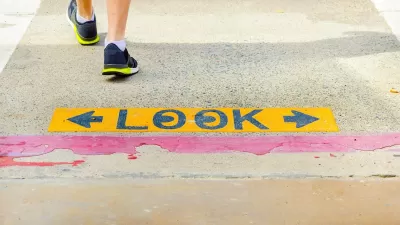An equity strategist offers advice on creating safe streets programs that address systemic racism.

Naomi Doerner, a consultant who helps bike and pedestrian advocates develop racial justice plans, gives Streetsblog her take on the blind spots in the planning community.
After addressing organizational culture and community outreach, Doerner points to Vision Zero as an example of a campaign hampered by a failure to analyze its relationship to systemic racism.
While its goal of eliminating traffic deaths is unassailable, Doerner suggests that the Vision Zero campaign has been implemented in a "top-down" manner that relies too much on police enforcement.
The problem, she says, is that the impacts of heavier policing are felt profoundly differently across socially disparate communities—and don't necessarily result in improved safety:
When you look at what is happening in communities of color in cities where we have this broken windows policing and you overlay this Vision Zero enforcement, there are concerns that it could lead to this kind of profiling or traffic stops.
Police are more likely to stop black and Latino drivers for minor infractions, Streetsblog points out; more troublingly, a recent study found this to be an important factor in the disproportionately high number of police killings of black and Latino people.
"This particular Vision Zero analysis had not been done by the advocacy community," Doerner notes. She continues:
I think that a lot of that really does have to do with the fact that a lot of the organized bike and walk community are not comprised of people of color. There are a very high number of people of color who bike and walk. But generally, they’re not really helping shape policy or the campaigns.
It doesn’t mean that you throw out everything about Vision Zero. It just means we have to use analysis tools to figure out who could very well be negatively impacted and develop alternatives.
FULL STORY: Naomi Doerner on How Street Safety Advocates Can Support Racial Justice

Study: Maui’s Plan to Convert Vacation Rentals to Long-Term Housing Could Cause Nearly $1 Billion Economic Loss
The plan would reduce visitor accommodation by 25,% resulting in 1,900 jobs lost.

North Texas Transit Leaders Tout Benefits of TOD for Growing Region
At a summit focused on transit-oriented development, policymakers discussed how North Texas’ expanded light rail system can serve as a tool for economic growth.

Why Should We Subsidize Public Transportation?
Many public transit agencies face financial stress due to rising costs, declining fare revenue, and declining subsidies. Transit advocates must provide a strong business case for increasing public transit funding.

How to Make US Trains Faster
Changes to boarding platforms and a switch to electric trains could improve U.S. passenger rail service without the added cost of high-speed rail.

Columbia’s Revitalized ‘Loop’ Is a Hub for Local Entrepreneurs
A focus on small businesses is helping a commercial corridor in Columbia, Missouri thrive.

Invasive Insect Threatens Minnesota’s Ash Forests
The Emerald Ash Borer is a rapidly spreading invasive pest threatening Minnesota’s ash trees, and homeowners are encouraged to plant diverse replacement species, avoid moving ash firewood, and monitor for signs of infestation.
Urban Design for Planners 1: Software Tools
This six-course series explores essential urban design concepts using open source software and equips planners with the tools they need to participate fully in the urban design process.
Planning for Universal Design
Learn the tools for implementing Universal Design in planning regulations.
Ascent Environmental
Borough of Carlisle
Institute for Housing and Urban Development Studies (IHS)
City of Grandview
Harvard GSD Executive Education
Toledo-Lucas County Plan Commissions
Salt Lake City
NYU Wagner Graduate School of Public Service





























